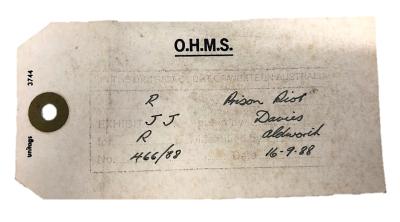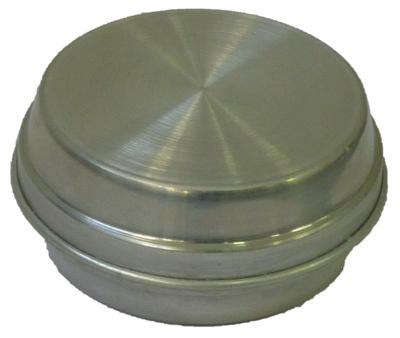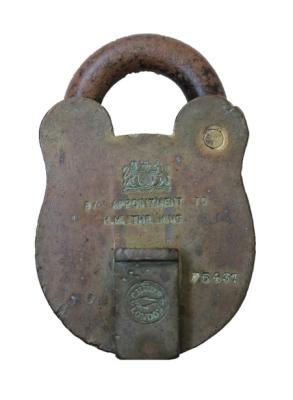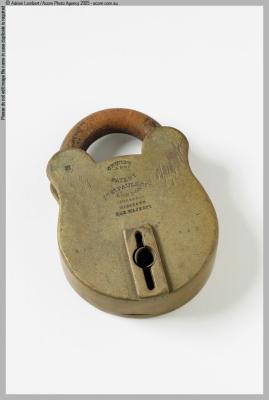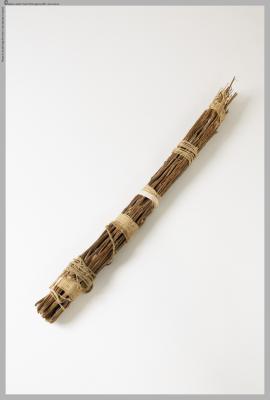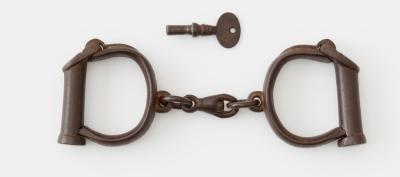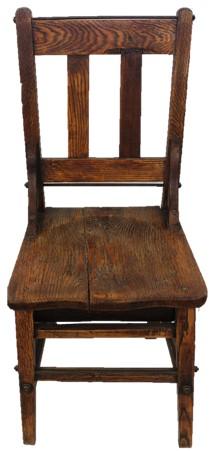UPRIGHT WOODEN CHAIR
Large, upright, rectangular, wooden, chair. The chair has four, rectangular, wooden legs. The two front legs form part of the seat's frame, and taper slightly towards the base. The rear legs form part of the back rest, and taper inwards towards the top and outwards towards the base. Support rods span the gap between the two front and two back legs, halfway toward the base. The back rest is rectangular in shape, secured between upper part of rear legs, and consists of two horizontal and two vertical lengths of rectangular wood. The seat is made from a rhomboidal shaped piece of wood, with a double scalloped front edge and hollow buttock-shaped surface.
Chair was made and used at Fremantle Prison. A photograph taken in the Prison's classroom (now the Prison Library) in the 1950s shows such chairs used by the students (Berndt Museum collection photograph. Image of Noel White teaching at Fremantle Prison). An article published by the West Australian on 12 August 1950 describes the Prison school and mentions the furniture, 'At first, makeshift furniture had to be used but the school is now equipped with desks and chairs made at the carpentry shop.'.
Details
Details
Workshops were a necessary part of the Convict Establishment and were some of the first buildings constructed on site. The Carpenters Workshop was originally a wooden building at the front of the Prison until 1858, when it was moved next to the Blacksmith’s Shop at the south-eastern corner of the site. Whilst carpentry was regarded as a difficult skill to learn, and not many of the convicts were trained to work with wood, carpenters were essential in the new Establishment’s construction. Convicts were trained to lay the joists, floors and roof, and build the scaffolding required around the new Prison buildings. They also built the wooden portable houses used by road parties, wagons, trucks and coffins.
In the Prison's later years the Carpenters’ Shop was reputedly one of the most productive shops in the Prison. Apprenticeships were relatively easily to obtain, with prisoners serving four years or more. The apprentices who worked in the shop and demonstrated an aptitude for the job were eligible to apply. In the Carpenter’s Shop, along with an instructor, there would be several prisoner tradesmen, allowing the apprentices an opportunity to learn. The work varied from a regular production line of all the cell furniture used at Fremantle Prison, to the finer art of teak fittings for yachts and quality handmade furniture.
When Fremantle Prison closed in 1991 the Carpenters’ Shop was still a productive prison industry. Most of the cell and site furniture in the Fremantle Prison Collection, made in the Carpenters’ Workshop, was left onsite when the Prison closed in 1991.
